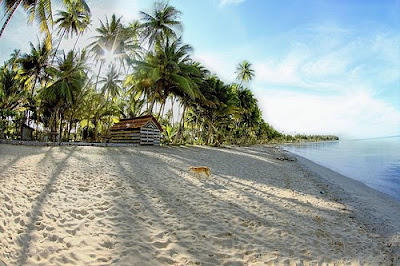Home » All posts
Natuna, is one of the regencies in Riau Islands Province. Natuna is the most northern islands in the Strait of Karimata in the north, Natuna bordering Vietnam and Cambodia, while in the South, Natuna is bordered by South Sumatra and Jambi. To the west, bordering Natuna to Singapore, Malaysia. And eastern borders with East Malaysia and West Kalimantan.
 |
| Natuna Beach |
During this time, the Natuna residing on International cruise line is known as a producer of Oil and Gas. However, Natuna not only save the earth, because a lot of places can be used as local excursions, with the natural charm of beaches and the presence of marine parks is quite beautiful white sand coupled with the existing on some islands could certainly be used as a park., And the islands a beautiful place to visit.
Natuna has a lot of tremendous potential, this district has a panoramic view of unspoiled natural beauty. Cluster-cluster of islands, coral reefs, marine life, granite mountains, waterfalls. Very rich Natuna natural potential but I still minimal access and support facilities.
Tanjung Bira is a white sand beach which is quite popular in South Sulawesi. This beach including beach clean, neat, and clear sea water. The beauty and comfort of the beach is famous for up to foreign countries. Foreign tourists from many different countries who visited this place for a vacation.
 |
| Tanjung Bira beach |
Tanjung Bira beach is very beautiful and spectacular with white sand as soft as flour. At the site, visitors can swim, sunbathe, diving and snorkeling. The visitors also can watch the sunrise and sunset in a similar position, and can enjoy the beauty of the two islands in front of this beach, which is Liukang Island and Goat Island.
Tanjung Bira offers a somewhat different kind of dives than anywhere else in Indonesia. This type of underwater adventure full of challenges, with dive sites accompanied by fast-flowing type of white tip sharks and black tip which accompany divers around. Part of the point of diving here is recommended for experienced divers who love this type of diving that are at risk due to current conditions which are sometimes quite strong. However, there are also several dive points that can be easily accessed by novice divers. Bira is one place that you can easily interact passively with sharks where a place like this is very often in Indonesia.
Kolbano beach one of the landmark tourist attraction in eastern homeland. When did tourism in coastal areas, must be identical and the picture is always pictured sand sea. But this would not you have encountered in coastal tourist areas kolbano.di kolbano coast, as far as your eye sees you will only be served stretch of slippery rocks with a unique color patterns and beautiful seductive. Beautiful pebbles that became a substitute for sand beaches along the coastline kolbano.
 |
| Kolbano beach |
Kolbano beach is located in the village kolbano, sub kolbano, East Nusa Tenggara with an area of approximately 17 square kilometers. Kolbano this stretch of coast facing the Indian ocean expanse.
Kolbano gravel beach is very rarely found in other coastal areas in parts of the world., texture typical of these rocks is not only a wonderful feast for the eyes of the beholder, but also into other livelihoods for local communities. Mining manually against these rocks, into other livelihoods for villagers kolbano. These rocks are widely used as an expanse of garden ornaments, both in residential and hospitality facilities in the city kupang.
Kolbano beach in the beautiful natural harbor district in the East Nusa Tenggara. Areas that belam also able to be touched in a professional foreign miners attractions. Pearls tour eastern Indonesia, which still dress up naturally.






